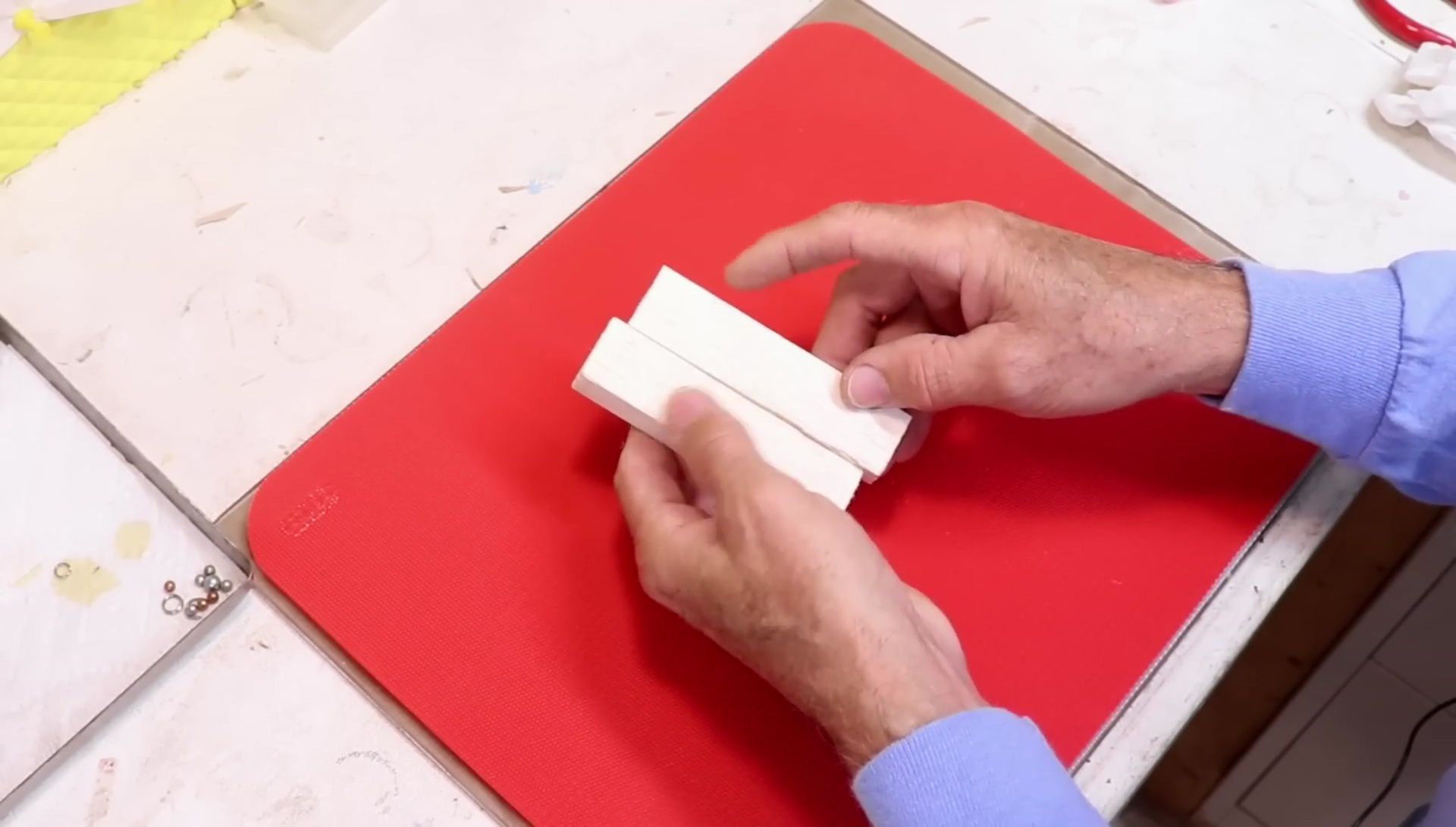This article details the creation of a superior walk-the-dog topwater lure crafted from balsa wood. Inspired by the popular Head and Spook design, this project aims to enhance its performance through key modifications. The focus is on achieving a flatter profile, resulting in a more enticing action that triggers aggressive strikes from fish, especially during crucial pauses in the retrieve. This improved action is achieved through careful consideration of the lure's center of gravity and its placement relative to the center of drag.The construction process utilizes a clamshell method, allowing for precise placement of internal components like a rattle chamber and wire harness. From initial shaping with a bandsaw to meticulous sanding and painting, the article guides you through each step. The final product, tested both in a tank and in a real-world fishing scenario, demonstrates exceptional walk-the-dog action and remarkable effectiveness in attracting fish. The result is a highly effective, aesthetically pleasing, and homemade topwater lure superior to its inspiration.
Pros And Cons
- Walks the dog easily
- Sits flatter in the water
- Includes a rattle
- Casts straight and accurately
- None explicitly mentioned
- Popular lure
- Extreme tail down position in the water
- Early models were hard to find with a knocker
Read more: 5 Killer Spinnerbait Fishing Lures You Need
Design Inspiration and Goals
This project focuses on crafting a compact, yet effective, topwater lure inspired by the popular Head and Spook, but with key improvements.
The goal is to create a lure that sits flatter in the water than traditional models, resulting in more aggressive strikes and improved performance.
This flatter presentation is designed to enhance its enticing action, which aims to trigger more bites during pauses, a crucial element of topwater fishing.
The Key to a Superior Walk-the-Dog Action
The secret to a superior walk-the-dog action lies in the lure's center of gravity (CG) being positioned well behind the center of drag.
This intentional design creates a lure that naturally rotates and glides enticingly, essential for attracting strikes.
Unlike traditional designs, a flatter profile is incorporated to enhance the lure's responsiveness and create an irresistible action.
Construction Process: The Clamshell Technique
The clamshell method is employed: two Balsa wood pieces are temporarily glued together, shaped as one, then separated.

This process allows for the precise placement of internal components, including a rattle chamber and wire harness.
Once the components are inserted, the two halves are re-glued, sanded, and prepared for the finishing steps.
Shaping and Refining the Lure Body
Initially, a blocky cylinder is created using a bandsaw, followed by careful shaping with hand tools and sandpaper.

This involves gradually refining the shape to achieve a smooth, cylindrical form with the desired dimensions and weight distribution.

The use of guidelines ensures precision, maintaining the lure’s intended profile and functionality.
Adding Internal Components and Finishing Touches
A rattle chamber is carefully carved, accommodating two small rattle balls and a single weight.

Internal wire harnesses are routed for hook attachment, ensuring a secure and functional design.

The lure is then sealed with UV resin, providing a smooth surface for painting.
Painting and Finishing the Lure
An iridescent silver base coat is applied, followed by layered paint applications to create a unique color scheme.

Details such as scales or skin textures are added to enhance the lure's realism.

Finally, several coats of a polyacrylic sealant are applied to protect the paint job and ensure durability.
Testing and Performance
The finished lure is tested in a tank to observe its action and swimming characteristics.

It is then taken to the reservoir for a real-world evaluation to gauge its effectiveness at attracting fish.

The lure demonstrates impressive walk-the-dog action, casting accuracy, and positive results during testing, indicating a successful design.
Conclusion
The homemade Balsa wood topwater lure successfully emulates and improves upon the design of the Head and Spook lure.
The flatter profile and strategically placed weight distribution result in a more aggressive and enticing action for fish.
The creation demonstrates a well-defined construction process, thoughtful design elements and an aesthetically pleasing finish, making it a highly effective topwater option.
